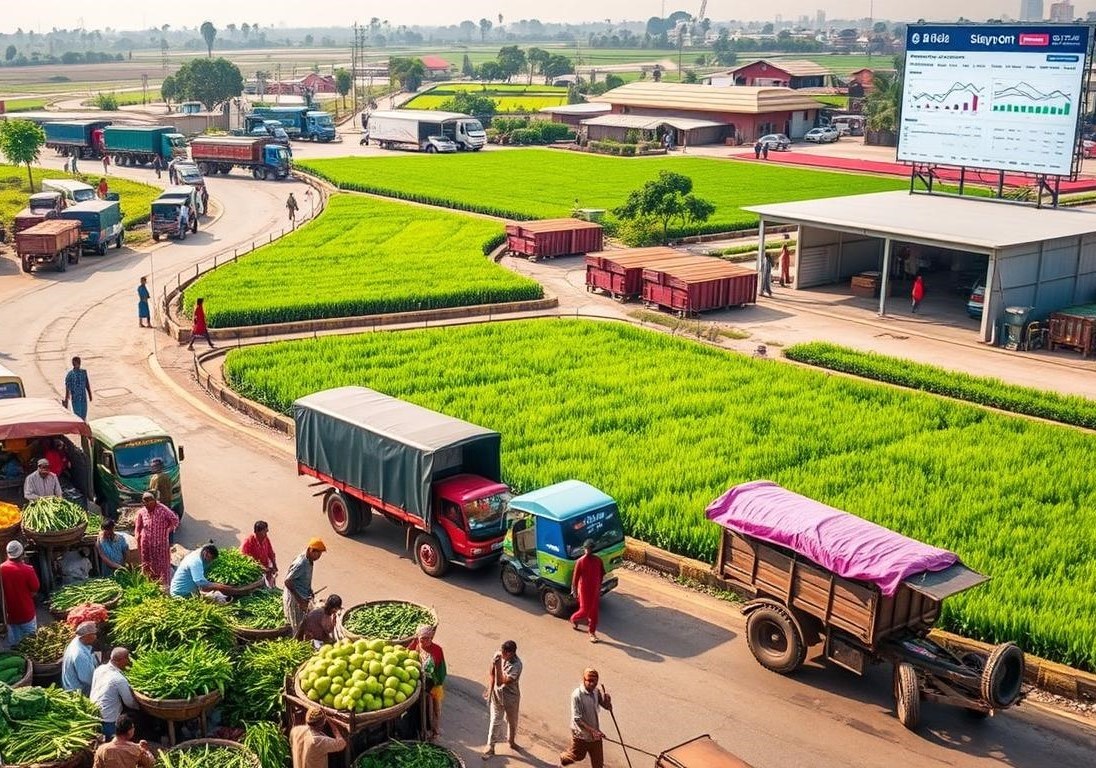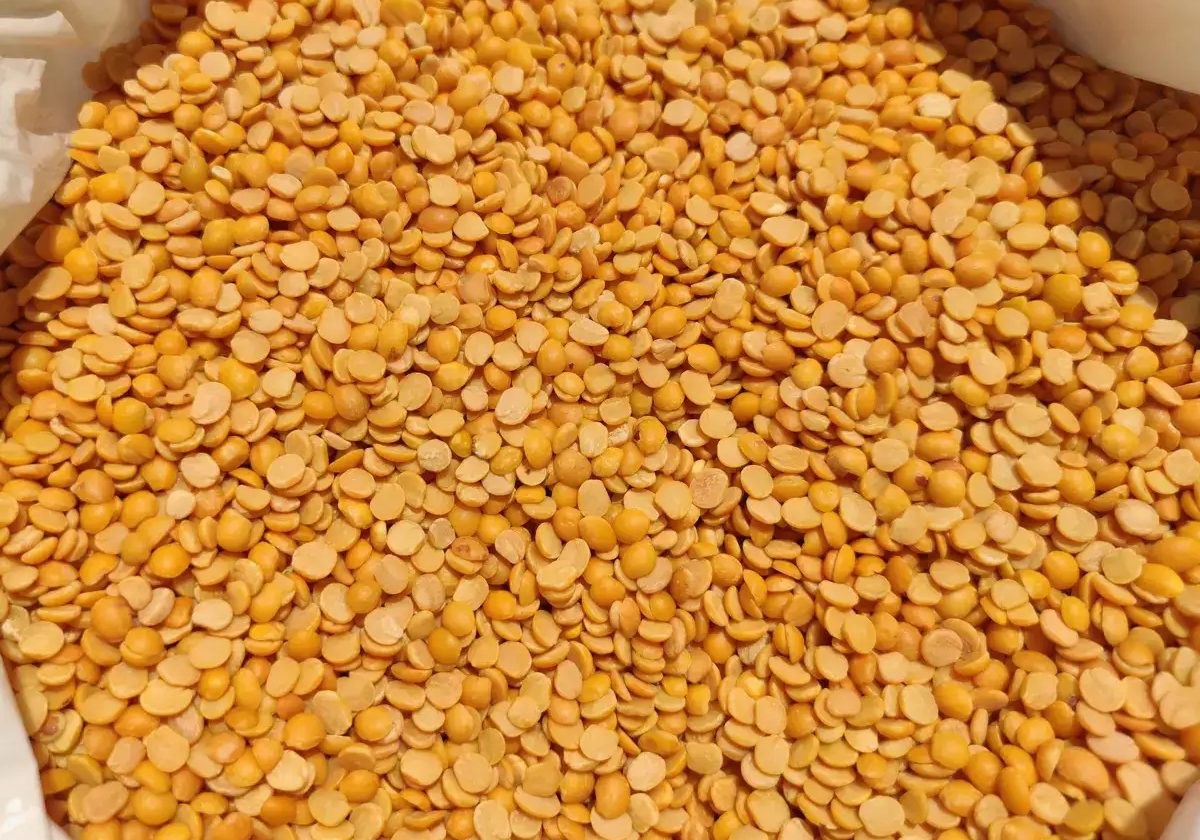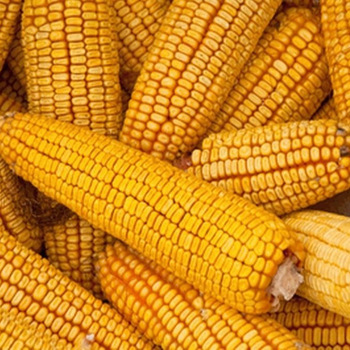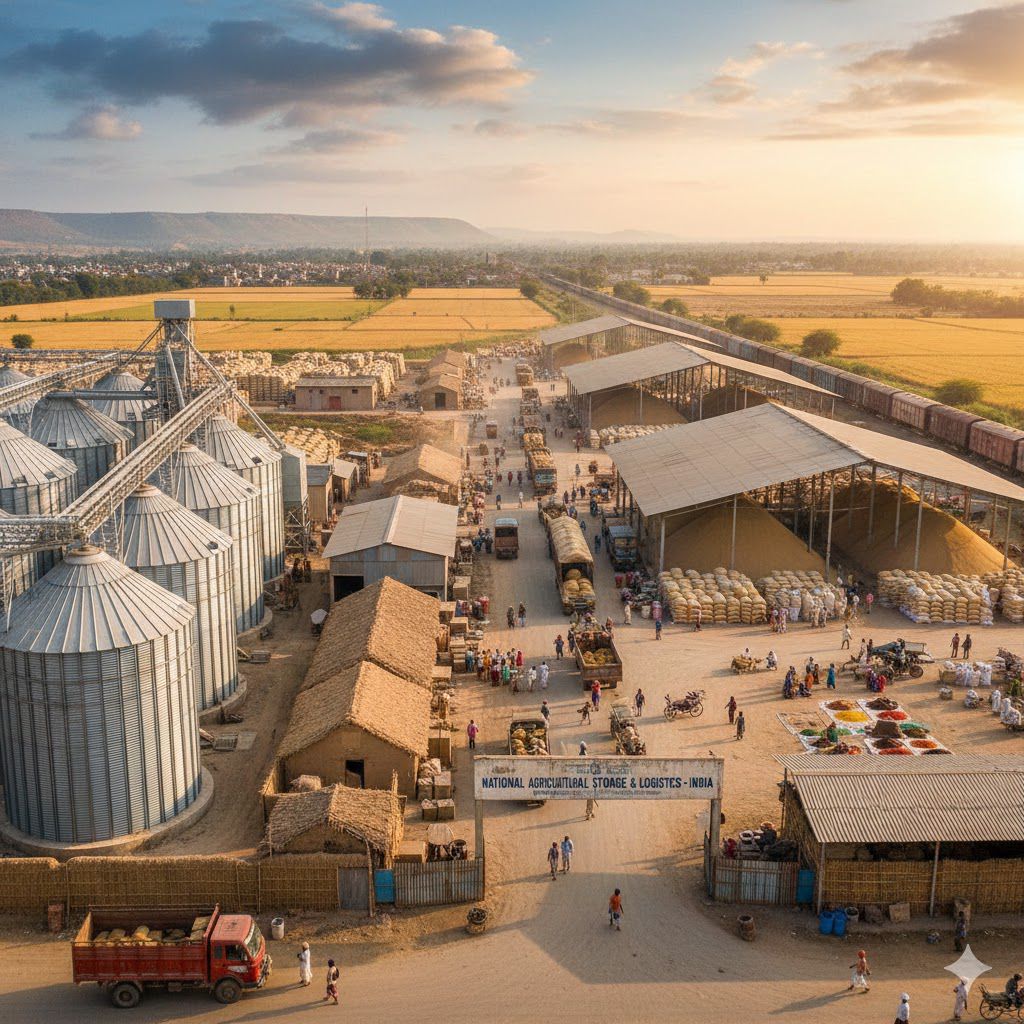India’s agricultural sector, the backbone of its economy, faces a critical challenge: inefficiencies in logistics that lead to massive post-harvest losses, price volatility, and farmer distress. With over 58% of the population dependent on agriculture, optimising the journey of produce from farm to fork is not just an economic imperative but a societal necessity. Enter Big Data in Agriculture—a game-changer poised to revolutionise agri logistics by enabling more intelligent decisions, reducing waste, and bridging the gap between farmers and markets.
The Current Landscape of Agri Logistics
Did you know India wastes approximately 16% of its agricultural produce due to poor logistics, and nearly 30-40% of fruits and vegetables perish before reaching consumers?
India’s agricultural supply chain remains fragmented, plagued by poor infrastructure, limited cold storage facilities, and a lack of real-time data. Smallholder farmers usually struggle with unpredictable demand and middlemen-dominated markets. Transportation delays, inadequate warehousing, and information asymmetry further exacerbate these challenges. Traditional methods, reliant on intuition and legacy systems, are ill-equipped to address these complexities.
Big Data to the Rescue!
Big data in agriculture logistics integrates IoT sensors, satellite imagery, weather forecasts, and market trends to create a seamless, data-driven farming logistics ecosystem. Here’s how it’s reshaping the future:
- Predictive Analytics for Demand-Supply Alignment: By analysing historical sales data, weather patterns, and consumer behaviour, predictive models can forecast demand for specific crops. Farmers gain insights into what to plant, when to harvest, and where to sell, minimising overproduction and shortages. Platforms like agribazaar use technology to predict crop quality and connect farmers directly with buyers.
- Smart Storage and Transportation: IoT-enabled sensors monitor real-time temperature, humidity, and spoilage risks in warehouses and vehicles. StarAgri regularly conducts quality checks of stored stock, ensuring optimal storage conditions. Improving route functions reduces transit times and costs, which is critical for export compliance.
- Dynamic Pricing and Market Access: Big data aggregates prices across mandis, enabling dynamic pricing models. agribazaar, integrated with big data in agriculture, empowers farmers to sell produce at competitive rates. agribazaar sapp delivers localised weather alerts and market prices, democratising access to information.
- Risk Mitigation and Sustainability: Climate data helps predict droughts or floods, allowing farmers and logistics players to adjust strategies. Insurance companies leverage big data analytics in agriculture to design tailored products, reducing financial risks. Additionally, data-driven precision farming minimises water and fertiliser use, aligning data-driven farming logistics with sustainable practices.
Case Study: Reducing Wastage in Maharashtra’s Tomato Supply Chain
In Maharashtra, a pilot project using RFID tags and GPS tracking reduced tomato wastage during transit by 20%. Sensors monitored storage conditions while analytics identified bottlenecks in distribution. Farmers received real-time alerts on price fluctuations, improving their bargaining power.
Challenges and the Road Ahead…
Despite its potential, India’s agri-logistics transformation faces hurdles. Limited digital literacy, high implementation costs, and uneven internet connectivity in rural areas hinder adoption. Data privacy concerns and the need for interoperable platforms also demand attention.
Public-private partnerships are critical. The government’s Digital India and AgriStack initiatives aim to create a unified agricultural data architecture. Meanwhile, startups and FPOs must collaborate to scale affordable solutions.
Conclusion
Big data analytics is not just a tool but a paradigm shift in agri logistics. By turning data into actionable insights, India can slash post-harvest losses, boost farmer incomes, and ensure food security for its growing population. The future lies in harnessing this potential through innovation, inclusivity, and infrastructure—ultimately cultivating an agile, resilient agricultural ecosystem that thrives in the digital age.
70% of farmers lack digital literacy, and rural connectivity remains patchy. Grassroots innovation—voice-based AI in regional languages, low-cost IoT sensors, and FPO-led data aggregation—can democratise access. Meanwhile, synergies with blockchain (for traceability) and drones (for crop monitoring) amplify efficiency, as seen in states like Andhra Pradesh, where tech integration boosted farmgate prices by 15-20%.
By 2030, a data-driven agri-logistics ecosystem could position India as a global export leader while securing food for 1.4 billion people. Fusing tradition and technology can forge an equitable, resilient future—but only if stakeholders act now to harvest this potential before another cycle of waste repeats. As India strives toward its vision of a $5 trillion economy, the fusion of agriculture and technology will be pivotal. The seeds of change have been sown, and with big data, the harvest promises to be bountiful.








 Connect With Us
Connect With Us